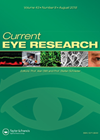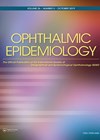You searched for "complaints"
Poppers retinopathy: What is it and how do we treat it?
2 June 2025
| Alexander Benson
|
EYE - Vitreo-Retinal
Poppers retinopathy is a relatively unknown phenomenon which afflicts users of poppers but should be considered as a differential in sudden-onset or sub-acute visual acuity loss – particularly in patients with a history of recreational drug use. Raising awareness of...
Bionic eyes: deciphering the neural circuitry of vision restoration
3 June 2024
| Muhammad Khursheed Ullah Khan Marwat
|
EYE - Cataract
As the boundaries between technology and biology blur, retinal prosthetics, often dubbed ‘bionic eyes’, present a ground-breaking paradigm shift in addressing blindness. This article delves into the captivating scientific intricacies of these neural interfaces, exploring their mechanisms of action, current...
Proning and the pandemic - ocular complications seen in critical care
6 April 2021
| Priyanka Sanghi, Mohsan Malik, Ibtesham Hossain, Bita Manzouri
|
EYE - Vitreo-Retinal, EYE - Orbit, EYE - Cornea, EYE - General
Priyanka Sanghi and her co-authors explore the ocular complications seen in critical care units throughout the country as we treat patients through this challenging time. The SARS-Cov-2 (COVID-19) pandemic has placed the NHS and critical care services under immense strain,...
The management of possibly progressive pterygium
1 February 2015
| Amit Patel, Peter McDonnell, M Quinlan
|
EYE - Cornea
A 43-year-old Sudanese male patient is referred by his GP with a fleshy lesion encroaching the nasal cornea for the last six months. History Make note of: risk factors, i.e. UV exposure and ocular irritation - history of living in...
Blinking and driving
1 October 2014
| Khadijah Basheer
|
EYE - General
Spontaneous blinking is dependent on cognitive processes and is regulated by a central pacemaker that is highly sensitive to the attention demands and cognitive workload of the visual task in hand. There is evidence of a variability in the frequency...
Can diuretics increase the risk of acute angle closure glaucoma?
4 December 2024
| Nishita Patel
|
EYE - Glaucoma
Diuretics, used widely in the treatment of hypertension, oedema, heart failure and liver failure, have been implicated in case reports in scientific literature to be linked to bilateral acute angle closure glaucoma (AACG). The aim of this study was to...
Windows 10 and Chrome sharing
Windows 10 on OCT scanners and cameras It has been well publicised that Windows 7 has finally been retired. No more patches and fixes are being released, at least for home users. Some NHS institutions and businesses have expensive extended...
1 February 2022
| Gwyn Samuel Williams
|
EYE - Cataract, EYE - Cornea, EYE - Glaucoma, EYE - Neuro-ophthalmology, EYE - Imaging, EYE - Oculoplastic, EYE - Oncology, EYE - Orbit, EYE - Paediatrics, EYE - Pathology, EYE - Refractive, EYE - Strabismus, EYE - Vitreo-Retinal, EYE - General
One of the great disasters of becoming a consultant ophthalmologist is the massive increase in emails that then occurs. Every time I open my inbox in work it seems complete luck whether there are 50 or 90 emails waiting avidly...
What not to miss in neuro-ophthalmology Part 1
1 April 2018
|
EYE - Neuro-ophthalmology
Neuro-ophthalmology is a complex and difficult subspecialty in ophthalmology. It has several connections to neurology, neuro-surgery, rheumatology as well as many other medical specialties. Working in an multidisciplinary team (MDT) environment is key to success in this subspecialty as mistakes...
Supranuclear ocular motility disorders
Figure 1: Bilateral INO Introduction Complex ocular motility disorders are a diagnostic challenge. These patients come with very complex ocular motility presentations and require a careful and detailed assessment in order to find the correct diagnosis and arrange appropriate investigations....Decoding the red eye
15 February 2021
| Vaishnavi Menon, Varshini Manoharan
|
EYE - Cornea
Red eye, or hyperaemia, is one of the most common presentations to primary care [1] and the emergency department [2]. However, despite this the underlying cause is often misdiagnosed which can lead to severe, sight-threatening conditions being missed [1]. Thorough...





